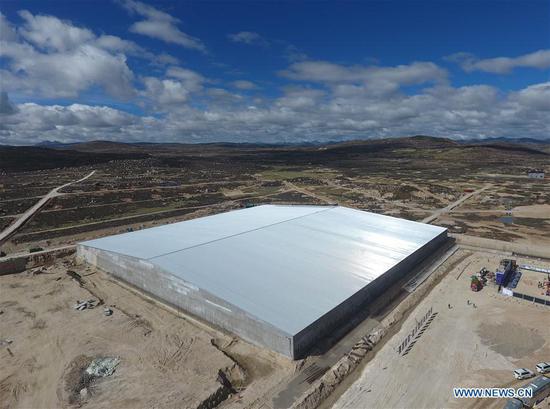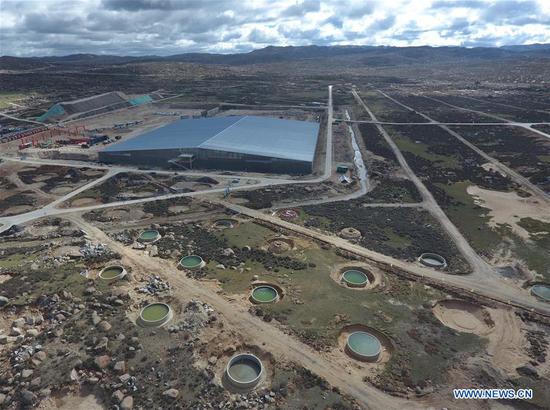
Aerial photo taken on June 19, 2018 shows the Water Cherenkov Detector in the Large High Altitude Air Shower Observatory (LHAASO) which is under construction in Daocheng County, southwest China's Sichuan Province. An observatory for detecting cosmic rays is being built in Sichuan Province. The project, known as the LHAASO, is located in mountains of the eastern part of Qinghai-Tibet Plateau at an average altitude of 4,410 meters. (Xinhua/Liu Kun)
Construction has begun on a large, high altitude cosmic-ray observatory in the Ganzi Tibetan Autonomous Prefecture, Southwest China's Sichuan Province on Tuesday, which is expected to become one of the world's four biggest research institutes in the field.
The project, Large High Altitude Air Shower Observatory (LHAASO), was approved by the National Development and Reform Commission in December 2015 with an estimated budget of 1.2 billion yuan ($187.2 million), and is expected to be completed by 2021, Xinhua News Agency reported.
The observatory will focus on exploring the origin of cosmic rays which "is the only sample of material obtained by humans from deep inside the universe," Xinhua reported, citing Cao Zhen, chief expert on the project.
Cosmic rays are high energy particles that rain down on the Earth from beyond the solar system. Carrying information about the origins of the universe, celestial bodies and solar activities, it is considered a valuable scientific resource for space exploration.
Discovered in 1912, many things about cosmic rays remain a mystery.
The Chinese Academy of Sciences (CAS) and the government of Sichuan Province are collaborating on the project, together with 20 Chinese universities and research institutes and hundreds of scientists from China and foreign countries including Italy, France and Russia, Xinhua News Agency reported.
When completed, the observatory will be one of the four biggest cosmic-ray observatories in the world. The other three are located in South America, the South Pole and Europe.
It is also expected to be more sensitive in detecting gamma rays and have a wider range of measuring cosmic rays than any other observatory in the world.


















































